In my last Andy’s Window essay about the sculptures of Imo Baird, I mentioned his art teacher Charles Littler who in the 80s introduced Imo to ‘mixing media’ as a new way of making art. The small sculpture (Figure 1) shown here demonstrates how Charles ‘mixed’ string, mirrors, dental plaster & drawing, a way of working that opened whole new pathways of art-making.
As the many artists, writers and students who had the good fortune to live and work with him will attest, Charles was one of the most influential and seminal art teachers in Tucson from 1958 up until his untimely death in 1991 (He was only known to his friends as ‘Charles’, not ‘Chuck’ or ‘Charley’ or even ‘Littler’, so I will continue that tradition here).
The breadth of his vision was featured in 1994 in a retrospective exhibition curated by his widow, the artist Pat Dolan at The University of Arizona Museum of Art. However I am confining this essay to the role that drawing played in Charles’s work, because his understanding of drawing was central to his work, as well as both unique and inspirational to more conventionally trained artists, including myself.
And as the stream of history reveals about all of us in time, Charles himself was shaped early on by his own teacher, the great painter Hans Hofmann (with whom he both studied and taught). Hofmann’s way of grounding his paintings in the physical act of mark-making (drawing) inspired the most influential post-war American painting movement of the 50s called Abstract Expressionism (Figure 2). Charles’ early painting clearly reflects Hoffman’s influence (Figure 3) as it did many others.While known as a painter, Hofmann, like Charles, made drawings from life on a regular basis, because he (like Charles) knew that the real power of ‘abstraction’ is a distillation, a kind of paradox that is kept alive through engaging with the visible world afresh each day.
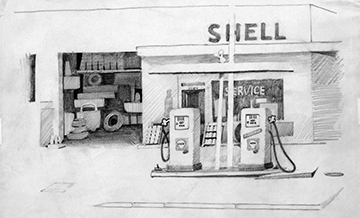 Charles, however, took that practice to the next step, which was that the kinesthetic practice of drawing quickly reveals one’s whole way of living (as expressed in the physicality of the mark) as the real art media. Charles’ early career had spanned the study of ceramics, painting, sculpture. But when Charles came back to the west in the late 50s, he also added working in multi media, then working in groups and finally awakening to the importance of community as the source of his personal creative life. In 1968 he inspired a group of friends to a real experiment by founding the Rancho Linda Vista Community of the Arts in 1968, now in its 47th year.
Charles, however, took that practice to the next step, which was that the kinesthetic practice of drawing quickly reveals one’s whole way of living (as expressed in the physicality of the mark) as the real art media. Charles’ early career had spanned the study of ceramics, painting, sculpture. But when Charles came back to the west in the late 50s, he also added working in multi media, then working in groups and finally awakening to the importance of community as the source of his personal creative life. In 1968 he inspired a group of friends to a real experiment by founding the Rancho Linda Vista Community of the Arts in 1968, now in its 47th year.
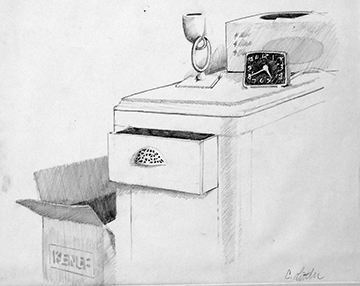 What does community have to do with drawing? For starters, it makes it very clear that artistic inspiration is not ‘over there’ it is right here, under one’s nose (these people, this day, this spoon I’m eating with). So it is a good idea, in order to manage one’s wandering mind (the ‘monkey mind’ as some meditators call it) to improve one’s ability to pay attention, and to stay close to other serious people who help keep one’s personal practice on purpose. So while Charles’s art interests always ranged far and wide, a day did not pass that he did not practice drawing, usually by looking at the objects closest to him. In another essay I will introduce his series of large charcoal portraits of his friends, often a process of many sittings over years.
What does community have to do with drawing? For starters, it makes it very clear that artistic inspiration is not ‘over there’ it is right here, under one’s nose (these people, this day, this spoon I’m eating with). So it is a good idea, in order to manage one’s wandering mind (the ‘monkey mind’ as some meditators call it) to improve one’s ability to pay attention, and to stay close to other serious people who help keep one’s personal practice on purpose. So while Charles’s art interests always ranged far and wide, a day did not pass that he did not practice drawing, usually by looking at the objects closest to him. In another essay I will introduce his series of large charcoal portraits of his friends, often a process of many sittings over years.
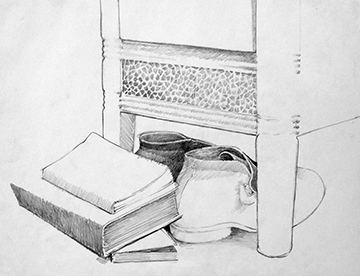
For now, I invite my readers to spend some quiet time with the set of Charles’ pencil drawings (Figures 4-8) that accompany this essay. Aside from demonstrating that the ‘ordinary’ is enough, there is also a quiet efficiency in Charles’ way of looking, because just below the narrative of the objects around him is a pattern of abstraction, the gentle arrangement of shape and light that embeds the drawing in one’s memory.
This is where the word ‘art’ applies, as Charles’s ‘way’ of drawing invisibly reminds us to look to our own home as a sacred place too.
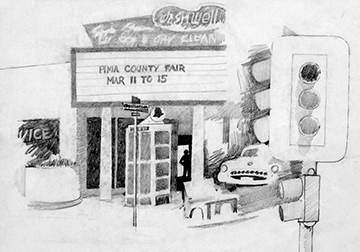

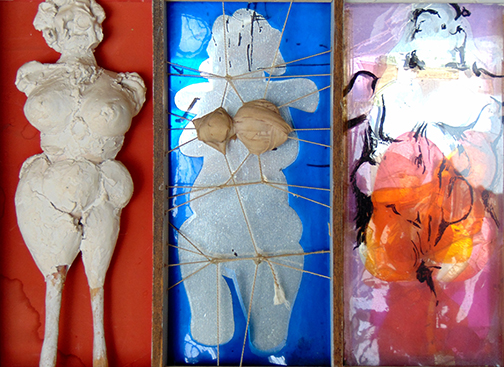
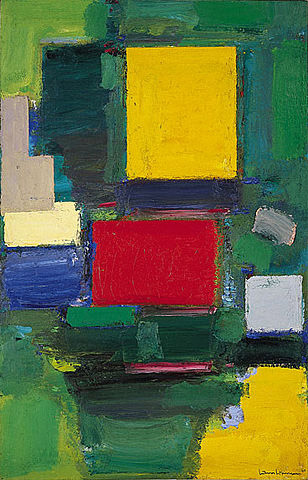
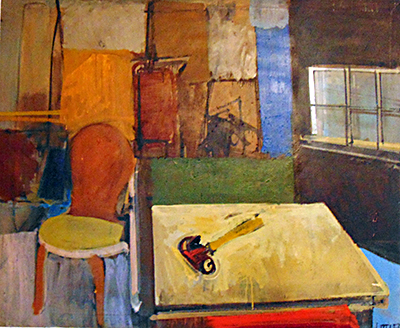
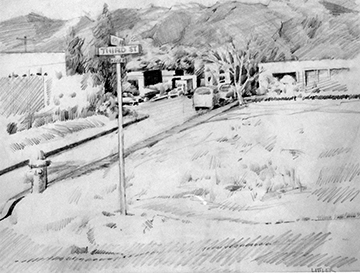
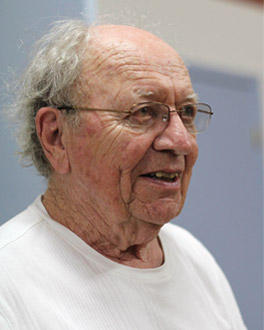


6 Responses to The Drawings of Charles Littler